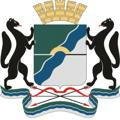
Наш Новосибирск
Агрегатор новостей Новосибирска и России По вопросам рекламы и сотрудничества: @Vadimtelegta
Ko'proq ko'rsatishMamlakat belgilanmaganRusToif belgilanmagan
4 959
Obunachilar
Ma'lumot yo'q24 soatlar
Ma'lumot yo'q7 kunlar
Ma'lumot yo'q30 kunlar
- Kanalning o'sishi
- Post qamrovi
- ER - jalb qilish nisbati
Ma'lumot yuklanmoqda...
Obunachilar o'sish tezligi
Ma'lumot yuklanmoqda...
Карта Санкт-Петербургской губернии онагож уезда захватывающая части и протчих уездов принадлежащих оной губернии както Шлисельбургской, Софейской, Ораниембоумской и Рожественской и имеет центром город Санкт-Петербург
https://t.me/oldlibrary/1506
Карта_Санкт_Петербургской_губернии.pdf7.59 MB
Photo unavailableShow in Telegram
Карта Санкт-Петербургской губернии онагож уезда захватывающая части и протчих уездов принадлежащих оной губернии както Шлисельбургской, Софейской, Ораниембоумской и Рожественской и имеет центром город Санкт-Петербург и от онаго простирающаяся во все стороны на 40 верст: сей губернии некоторая часть называлась прежде Ингермоландиею, завоевана у шведов в 1702 году, и трактатом в Нейштате заключенным утверждена за Россию 1721 году, в которой заложен город Санкт-Петербург уже 1703м году маия 16 дня что ныне столичный и губернский, состоящей в Европе в северной полосе под 59° 57´ широты, 47° 57´ долготы, а открытие губернии поновому учреждению произошло 1780 году, сельскияже жители россиана фины игры и колонисты
https://t.me/oldlibrary/1506
Atlas de Joan Martines.
Publication date 1587
https://t.me/oldlibrary/1504
Atlas of Joan Martines..pdf15.34 MB
Photo unavailableShow in Telegram
This manuscript atlas by Joan Martines, cosmographer to King Philip II of Spain, dated 1587, represents the combination of two cartographic schools that existed at the time of its creation. The older one was the traditional school of Majorca, which specialized in decorative portolan maps that by this time were obsolete with regard to the geographic information they conveyed. The newer one was the cartographic school of the Low Countries, which applied Renaissance principles and used different forms of cartographic representation based on new concepts in astronomy, mathematics, and geography to produce maps containing more information than the traditional portolans. The atlas consists of 19 maps, each on two pages, with the drawings occupying nearly the length of the pages and framed by edgings of different colors. Place-names are given in Gothic letters, in red and black ink, and in Roman small capitals.
https://t.me/oldlibrary/1504
The charts are remarkable for their narrative wealth. In the regions displayed, natives are portrayed wearing no clothes, with attributes thought to be typical, while busy hunting, gathering food, or carrying out other activities representative of their respective countries as portrayed in Western literary works. The conquerors, in contrast, appear on horseback, wearing hats and suits. The map of Africa contains what most likely is a pictorial allusion to the battle between the Portuguese and Moors near Ksar el-Kebir (Alcazarquivir, Morocco) in 1578. The two riders clad in characteristic costumes and carrying banners may represent the main protagonists in the battle, King Sebastião I of Portugal and Sultan Abd Al-Malik of Morocco (shown wearing a turban). The atlas was transferred from Polling Abbey (Upper Bavaria), when it was dissolved in 1803, to the Munich Court Library, which became the Bavarian State Library, where it has remained ever since.
https://t.me/oldlibrary/1502
Atlas_with_Portolan_Charts_of_the_Old_World_and_New_World,_1580.pdf57.96 MB
Photo unavailableShow in Telegram
Atlas with Portolan Charts of the Old World and New World, 1580.
This atlas of portolan charts of the old and the new worlds consists of 16 double leaves made from fine white parchment, bound in costly red morocco leather (made from fine goatskin) with gold ornaments in oriental style. The important Portuguese mariner, cartographer, and painter Fernão Vaz Dourado is thought to have made the atlas in 1580, near the end of his life. It belongs to a class of late-16th-century cartographic masterpieces, which reflect the period's rising demand for cartographic works that were both visually impressive and useful for practical navigation. The atlas was commissioned by the Portuguese crown and produced in Goa, western India, where Dourado spent his last years. The geographical scope of the atlas extends from South America to the Persian Empire, to China (where Canton is named), to Java and New Guinea, and to North America.
https://t.me/oldlibrary/1502
Военная энциклопедия . Том 18.
Издавалась книгоиздательским товариществом И. Д. Сытина с 1911 по 1915 год.
https://t.me/oldlibrary/1500
Военная энциклопедия Том 18.pdf60.89 MB
Военная энциклопедия . Том 17.
Издавалась книгоиздательским товариществом И. Д. Сытина с 1911 по 1915 год.
https://t.me/oldlibrary/1499
Военная энциклопедия Том 17.pdf26.59 MB
Военная энциклопедия . Том 16.
Издавалась книгоиздательским товариществом И. Д. Сытина с 1911 по 1915 год.
https://t.me/oldlibrary/1498
Военная энциклопедия Том 16.pdf22.72 MB
Военная энциклопедия . Том 15.
Издавалась книгоиздательским товариществом И. Д. Сытина с 1911 по 1915 год.
https://t.me/oldlibrary/1497
Военная энциклопедия Том 15.pdf71.40 MB
